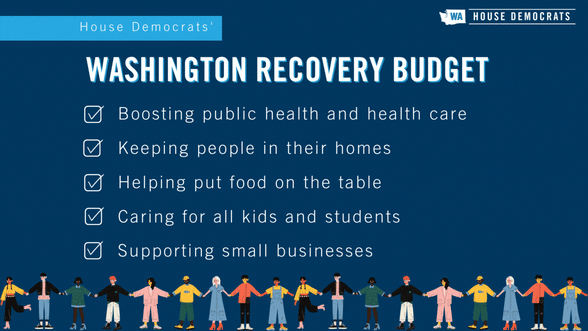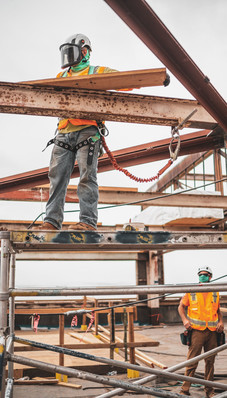Asphalt Plant Survey
On March 17th, Senator Hasegawa, Rep. Hackney and I had a telephone town hall to hear from constituents. One caller asked about the possible siting of an asphalt plant near SR 169 and the Cedar River. In an effort to get to more callers, we were trying not to have all three legislators answer every question. Only Senator Hasegawa responded to that caller so I’d like to take the opportunity now to share more of my thoughts with you.
I first started engaging with constituents about the possible siting of an asphalt plant near the Cedar River in the fall of 2017. Even though this siting is under the jurisdiction of King County and not the state legislature, I wanted to do what I could to make sure that the concerns and questions about the asphalt plant were heard. I talked with King County councilmembers individually about the potential environmental impacts of the project.
Thanks in part to your feedback and our inquiries, the King County Council issued a temporary moratorium in November of 2017. This moratorium was placed on the acceptance of applications for the development of rural industrial uses near the Cedar River to investigate if additional regulations were required. After the results of the study and any recommended regulatory changes were provided to the council by the executive, no extension was issued, and the moratorium expired.
Then in December of 2018, in light of the public comment period on this project, I decided to survey constituents and, importantly, pass on the survey results to the members of the King County Council. I continued to listen to constituents and have conversations with individual councilmembers after the survey to let them know the importance of this issue.

It’s 2021 and I’m still hearing from constituents about the possible asphalt plant. In fact, this year there has been an upsurge in calls and emails about the plant. It’s time to survey constituents again and forward the results to the King County Council. They need to know if community concerns are growing or changing since the 2018 survey. I hope everyone will share their views and I will continue to do my part to see that environmental protection and community quality of life are high public policy priorities. |
Education Survey Results
In light of Governor Inslee’s executive order requiring schools across the state to provide families with the opportunity for at least two days of in-person schooling per week, I asked you and your families about your priorities for K-12 education.
Thank you to those who participated in that survey! Your responses told me a lot about where our district stands on how to deal with learning loss and other effects on our K-12 education system during the COVID-19 pandemic.
For more information, check out the 11th District Education Survey results.
Small business grant applications now open

The Department of Commerce is launching a new round of Working Washington small business grants on Monday, March 29th. This new round of grants is focused on brick-and-mortar businesses that have been most directly impacted by public health measures. To see if your business may be eligible, please go to commercegrants.com. Commerce’s technical support center is currently open to answer any questions and starting on March 29th they will be providing assistance in multiple languages. You can contact them by calling (855) 602-2722 or emailing commercegrants@submittable.com. Trusted community organizations are also providing translation and individualized guidance and their contact information is available through this directory. |
The Washington Recovery Budget
Last Friday, House Democrats rolled out our state operating budget proposal, the Washington Recovery Budget. This budget uses state and federal funds from the American Rescue Plan to support the people and families who have been hit hardest during the COVID-19 pandemic.
It has been a rough year for so many of us, and we can build back a better, more inclusive Washington that is even stronger than we were before. In the past when budgets were tight, the legislature made harmful cuts that resulted in some Washingtonians being left behind when the state once again prospered. Black, Brown, and Indigenous families and communities were among those most negatively impacted by these previous austerity budgets.
That’s why the House budget team worked intentionally to thread racial equity throughout the entire budget development process. The result is not just line items we can point to, but values that are reflected in every single decision.
Read on to learn more details about the Washington Recovery Budget.

COVID Response and Health Care: Utilizing the state budget and the Biden/Harris American Rescue Plant Act, we can dramatically expand our public health response to COVID-19 and set us up for long-term public health success. I am proud to support our two-year House Democratic budget proposal that provides:
- $1.185 billion for COVID vaccines, contact tracing and testing;
- $100 million for local public health districts and regions;
- $94 million for primary care provider rate increases; and
- $35 million for uninsured and underinsured care through federally qualified health centers, rural health centers, and free clinics.
Economic Recovery: I know this year has been hard. So many families have suffered from reduced work or lost jobs or had their financial security disappear in the blink of an eye. For those living in poverty and struggling to make ends meet before the pandemic, life was hard enough. With COVID-19 forcing people to choose between their health and their job, it is simply too much. I believe our proposal offers incredible support to those families and businesses who need help the most, through:
- $1.07 billion for rental assistance;
- $600 million for unemployment insurance tax rate cuts;
- $250 million in small business grants;
- $166.6 million in mortgage assistance through the ARPA Homeowner Assistance Fund;
- $140.8 million in food assistance programs;
- $121.6 million in state housing/homelessness assistance;
- $63.63 million to increase TANF grants and extend benefits; and
- $26.2 million increase for the Emergency Cash Assistance program.
K-12 Education and Higher Education: After a year of disruption, our children deserve to have safe and fully staffed schools that can meet their educational needs. At the same time, I recognize that our schools still had unmet needs prior to the pandemic. To live up to our obligation, I am proud this budget keeps our schools and our state colleges and universities whole, adds five instruction days to the upcoming school year to help kids learn, and adds to our school districts through:
- $53 million for additional special education funding;
- $52.5 million for additional counselors in high poverty schools;
- Continuing our historic investments with the Workforce Education Investment Act, fully funding the Washington College Grant; and
- $14 million in higher education emergency assistance grants that help college students maintain stability so they can finish their programs.
And so much more!
Learn more about the investments made in the Washington Recovery Budget. En Español.
Budget details from the House Office of Program Research.
House proposes historic construction budget to rebuild economy

The 2021-23 capital budget proposed by House Democrats would break the record for total investments and put tens of thousands of people to work rebuilding the economy. The proposed budget (House Bill 1080) includes $400 million in federal funding for investments in water, sewer, and broadband service, along with $189 million for critical capital budget projects enabling work, education, health monitoring, and other items related to responding to the pandemic. A total of $48.5 million would go toward grants and loans for early learning facilities. Public schools would receive $969.9 million, while community colleges get $299.8 million and public universities are set for $678.9 million in construction funding. The largest project is the construction of the Behavioral Health Teaching Facility at the University of Washington ($191.3 million). This proposal also sets new records for investments in housing ($240 million), early learning ($48 million), and broadband internet access ($155 million). Check out the full details about the budget. You can also find district project lists and maps. |
Sincerely,
 |
|
Rep. Steve Bergquist
